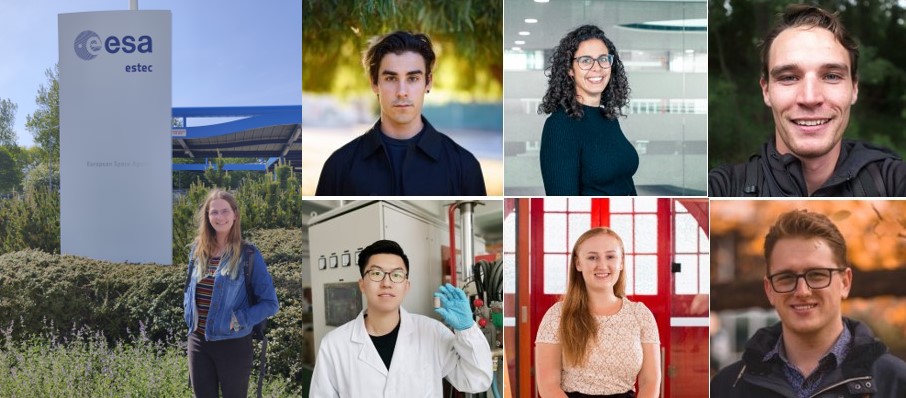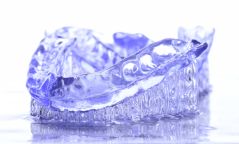Celebrating World Space Week

Swinburne's next_gen researchers. Clockwise from left: Belinda Rich, Daniel Ricardo, Dr Anais Möller, Matthew Shaw, Thomas Graham, Grace Lawrence and YuanKun Zhang.
In summary
- World Space Week (4-10 October) is the largest annual space event in the world
- Swinburne is proud to celebrate our next_gen researchers who are helping to drive innovation and improve our understanding of space
Global interest in the space race and the launch of the James Webb Space Telescope have rekindled interest in astronomy and related fields. To celebrate Space Week (4-10 October), here are some of the next_gen researchers at Swinburne helping to drive innovation and improve our understanding of space.
Shedding light on the Universe
Dr Anais Möller studies transients – astrophysical phenomena that shine brightly and then fade away – to understand their extreme physics and what the Universe is made of. She is leading a project that aims to single out the most exciting exploding stars and extreme events out of the millions detected each night at the world’s largest optical telescope, the Vera C Rubin Observatory.
She will use machine learning algorithms to accelerate automatic discovery in massive data sets. “It is incredibly exciting to lead a project to understand what the Universe is made of and the conditions in which exploding stars occur using data from the world’s largest optical telescope,” Dr Möller says. “It is quite challenging as well, since we need to find these exploding and merging stars before they fade, so we need to comb very quickly through millions of other detections every night.”
Detecting dark matter
PhD student in Swinburne’s Centre for Astrophysics and Supercomputing, Grace Lawrence’s research uses world-leading galaxy simulations to investigate the presence of dark matter in galaxies like our own Milky Way. Her work uses these simulations to compute predictions for how to detect dark matter, and what we can expect to find if we do.
Sustainable human presence in space?
Daniel Ricardo’s research is looking to better understand the ices that exist in the permanently shadowed regions at the poles of the Moon. “Water is a critical resource in space, and so a big question facing the global space industry is 'how do we get it?' and that is the question I'm trying to address,” Daniel says.
“More specifically, what are its physical properties and how does that affect excavation and mobility for humans and rovers? My aim for this research is to support the return of the first woman and person of colour to the Moon with NASA's new Artemis program, and for a sustainable and long-term human presence in space.”
Responsible AI in space
As the space industry grows in value and technical capabilities, guidance is required to ensure the responsible use of artificial intelligence (AI) systems in space. The application of existing responsible AI regulatory frameworks and principles is unclear in the context of space.
Thomas Graham’s PhD project is focused on determining the legal obligations surrounding the development of AI systems for the space industry and developing standards and frameworks to ensure and promote trust and confidence in these systems.
Mining the Moon - extracting metal in space
Matthew Shaw is a PhD candidate working in the field of astrometallurgy (metal extraction in space). His PhD research (for which he won the 2021 Asia-Pacific 3MT Final) has focused on the use of concentrated sunlight and vacuum to process metals from Moon dirt. “A lot of our work is focused on resource extraction in space – specifically on the Moon and Mars. We use a lot of specialised equipment like the Swinburne Solar Simulator and turbo molecular vacuum pumps to simulate the conditions in space for our research.”
Yuankun Zhang’s PhD project focuses on investigating how heat is transferred within lunar regolith, the fine powdery material that covers the surface of the Moon, when heated by solar energy. Yuankun says, ”Using lunar soil as a construction material like concrete is of special interest as it saves the cost of transporting building materials to the Moon.
The powdery lunar soil will become solid under high-temperature processing (>1000℃), named sintering in traditional industrial applications. Considering the extremely harsh environment on the Moon compared to Earth (no atmosphere, microgravity, and vacuum), concentrated solar energy is a promising energy source for this thermal technique. My research is to develop a mathematical model to predict how heat is transferred within the lunar regolith when heated by focused solar energy.”
PhD candidate Belinda Rich is investigating how we can cast objects on the Moon from the molten metal extracted from regolith (see above). Many developing oxygen extraction technologies (for making fuel and breathing air in-situ) work by electronically removing oxygen from regolith, leaving behind a molten metal byproduct.
Belinda says, ”My work is focusing on making use of that byproduct. It will be a stepping-stone towards building habitats, power infrastructure, robotics etc. on the Moon without relying on Earth materials. The aim of my work is to create a design for a lunar casting system and then to investigate how the unique lunar environment will affect the material properties of the metal we cast.”
Discover Swinburne's Space Technology co-major. The co-major is open to all undergraduate students and spans space science, microgravity science, space environment, data and visualisations, space entrepreneurship, space policy, space law and space technologies.
-
Media Enquiries
Related articles
-

- Technology
- Health
- Business
From custom-fit Hearables to dental devices: how H3D led a Swinburne alum to startup success
Swinburne alum Dr Philip Kinsella, co-founder and CTO of custom-fit devices startup H3D, shares the story of the company’s growth and evolution as a multi-industry innovator.
Tuesday 01 October 2024 -

- Health
Young Australians turning to social media for sexual and reproductive health support, report reveals
A new Swinburne report had found that social media is helping fill gaps in sex education and providing an essential connection point to health services for young adults.
Tuesday 08 October 2024 -

- Astronomy
- Education
- Science
- University
Swinburne’s Professor Matthew Bailes honoured with 2024 Prime Minister’s Prize for Science
Swinburne’s Professor Matthew Bailes has been awarded the 2024 Prime Minister’s Prize for Science for his pioneering work in astrophysics, particularly his discovery of fast radio bursts (FRBs).
Wednesday 09 October 2024 -

- Sustainability
International project makes hydrogen storage lighter for future transport
Swinburne has collaborated with the University of Stuttgart to create an innovative new hydrogen storage technology could lead to safer, lighter and faster zero emissions transport in the future.
Tuesday 15 October 2024 -

- Science
- Student News
Swinburne students demonstrate how science can solve social issues
Over 120 Swinburne University Bachelor of Science students created solutions for issues faced by City of Boroondara Council through a scientific lens, using their knowledge in biotech, chemistry, maths, data analysis, engineering and software engineering.
Thursday 26 September 2024

